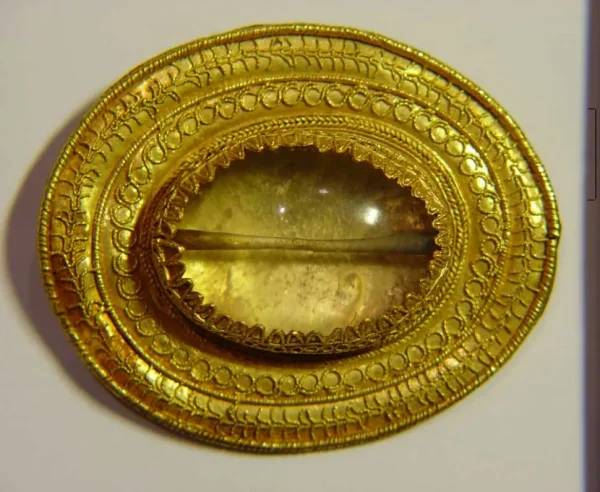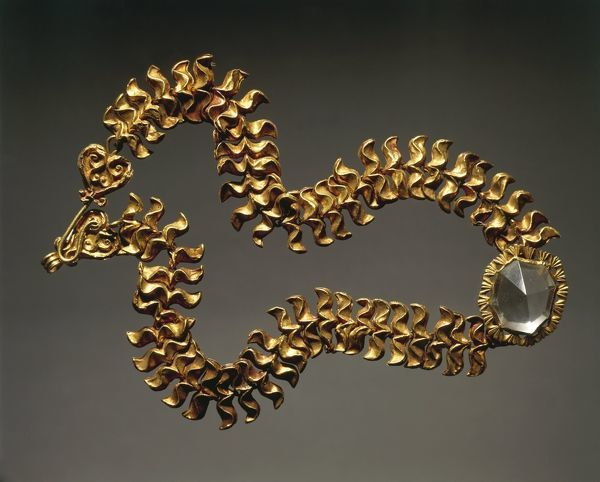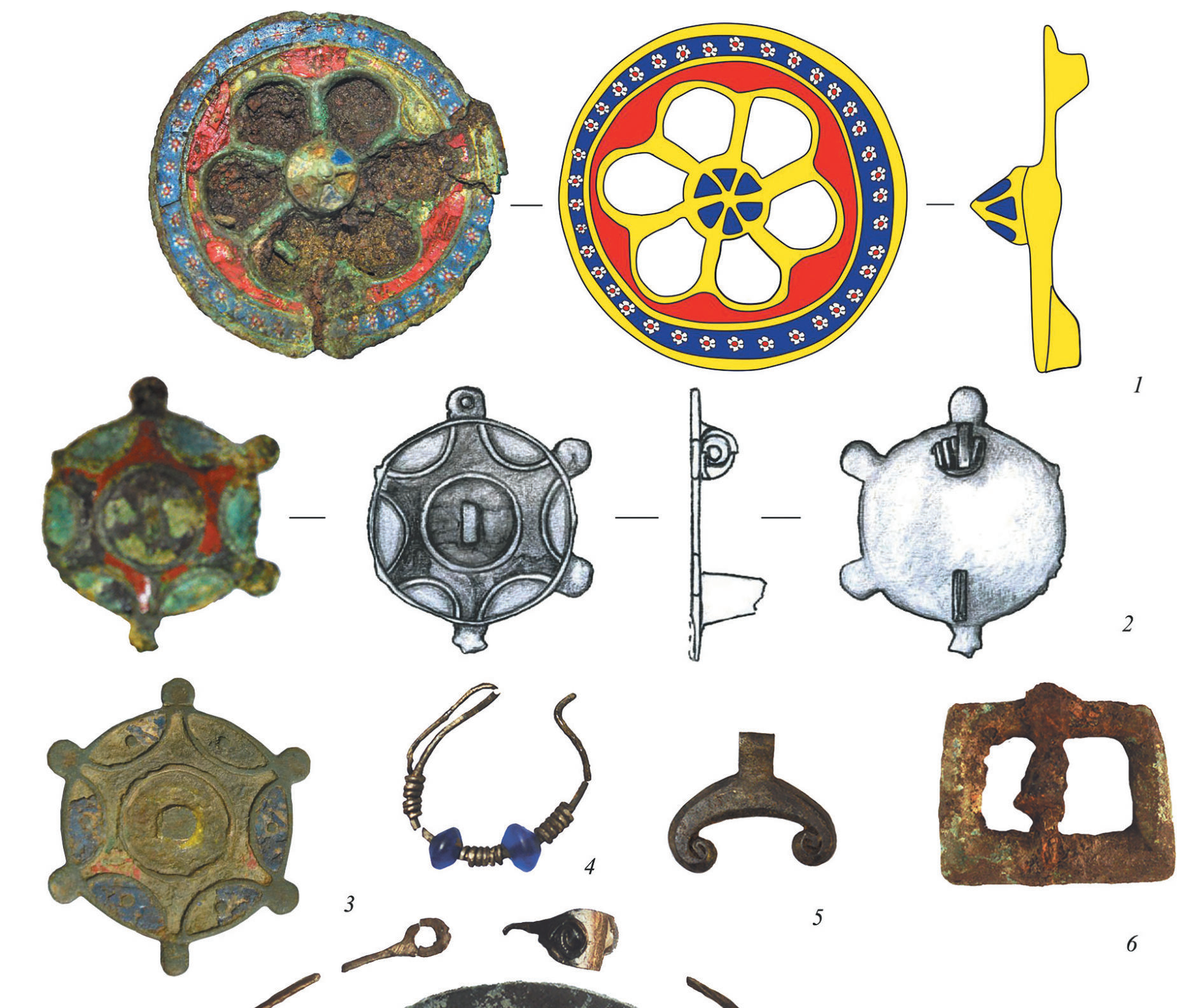Jewelry from the Mesambria (Nesebar) necropolis 3rd – 2nd century BCE.
An original accessory peculiar only of Mesambria was the agrafa – an ornamented plate of gold, silver or bronze attached to the garment with a fibula [a safety pin]
The clasps are another typical representative of the fashion in Messambria. This kind of adornment consists of a plate with a fibula for fastening it. Five of those were found – three gold ones, one made of silver and one made of bronze. Only one of them could be considered imported. Similar to it (as far as the shape, the style and the details of the decoration are concerned) are two brooches from Melos from the 3rd – 2nd century BC, which are considered Ionian production. The way the clasps were fastened also signifies that they date from the second half of the 3rd century BC.
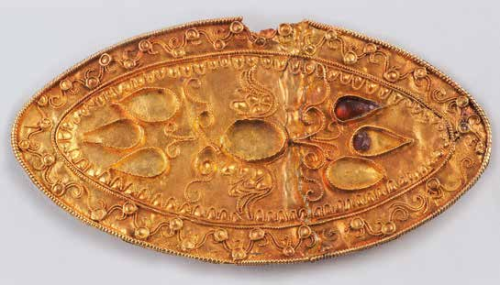
RMH Burgas, inv. N 1335
Tonkova 1997а, 89, fig. 8; 100, Pl. IV 3
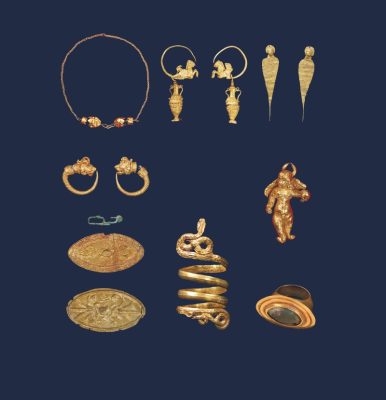
At the Volos Museum there is a gold fibula / brooch from Demetrias, South Cemetery, Hellenistic period, 3rd century BCE.
Width: 1.3 cm. Length: 2.2 cm
Oval shaped gold buckle decorated with twisted wire and floral motifs, rendered in filigree. Four gold cylindrical stems used for clasping.
Publication: Μπάτζιου-Τριανταφυλλοπούλου 2012, 252
[ATHANASSAKEIO ARCHAEOLOGICAL MUSEUM
OF VOLOS 1909 – 2019, Volos 2019]
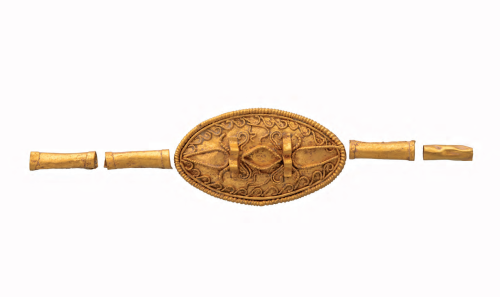
Photo © Ephorate of Antiquities of Magnesia Printing
Photographer Athanasios Efthymiopoulos
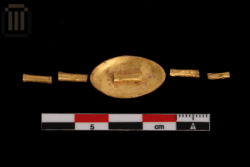
Photo source https://nationalarchive.culture.gr
From the collection of the Archaeological Museum of Agrinio, Greece, a gold ellipsoid shield of the end of the 4th -beginning of the 3rd century BCE; length 3.7 cm.
On the inner surface, a stylized lightning has been given in relief, which in its middle bears a gold-bound semi-precious deep red stone. At the periphery a thin band with granular decoration. On the back side, there are tubes for fixing the jewelry to clothing or another surface are preserved.”
Photo and info https://nationalarchive.culture.gr

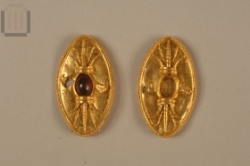

Ephorate of Antiquities of Dodecanese
https://nationalarchive.culture.gr
“Group of three identical gold ellipsoid buttons. They are surrounded, along their circumference, by a pair of wires, of which the outside is twisted. Two pairs of superimposed spirals of double twisted wire are arranged symmetrically on either side of the major axis of the ellipsoid surface of the knobs, which is indicated by an elongated decorative element of a pair of twisted wires surrounding an embossed navel in the center. At the ends of this elongated decorative element and at the points of contact of the symmetrical superimposed helices, very small wire circles have been added, where semi-precious stones or glass masses may have been applied. On the lower surface of the knobs, at both ends of the long axis of the ellipse, are attached laminar loops for their attachment to the objects they decorated (cloth, if they are knobs, or fork stem, if they are fork fittings).”
- The mirror of time: Female beauty through the ages. Catalogue of the exhibition
Mariya Reho, Petya Andreeva, Nataliya Ivanova et al. National Institute of Archaeology, Sofia 2016. - Milena Tonkova. Hellenistic Jewellery from the Colonies on the West Black Sea Coast. – in Archaeology in Bulgaria, vol. 1, 1997, No 1, 83-102 https://www.academia.edu


